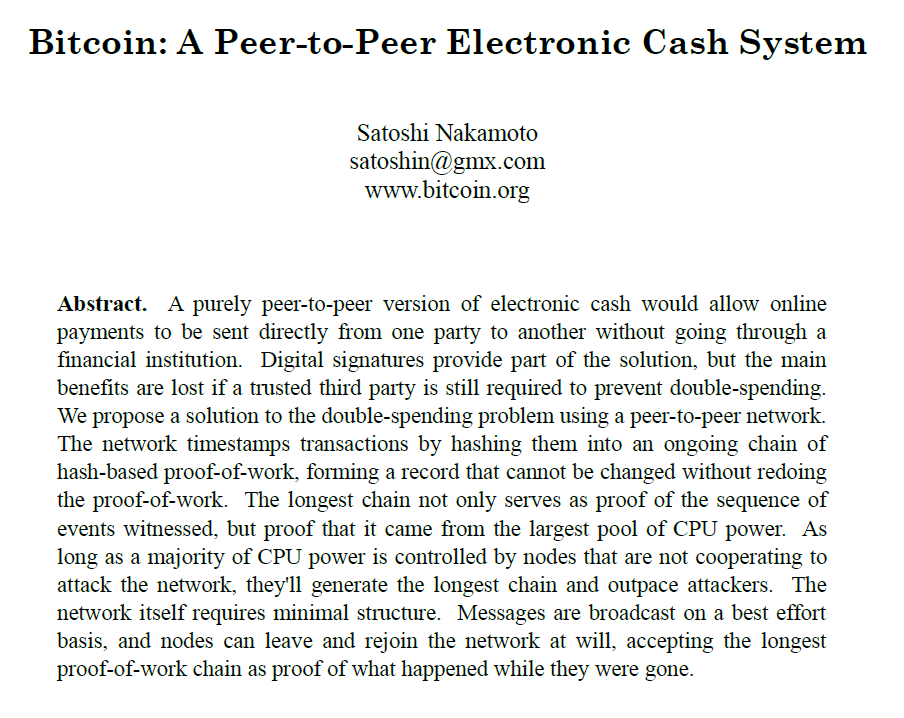October 31st, 2008 marked a shift in the financial and technological world, that would only come to be truly recognized years later. An enigmatic character, known only as Satoshi Nakamoto, released a whitepaper on a cryptography mailing list. This wasn’t just any whitepaper, it was a 9-page document that laid the foundation for a new form of electronic money, one that would be entirely decentralized, operating without the need for intermediaries. Bitcoin.
What made Bitcoin truly revolutionary was the underlying blockchain technology – a fully peer-to-peer (P2P) money network, no middlemen, no banks. The Bitcoin whitepaper was a declaration of monetary independence. Here is why:
Decentralized network
Bitcoin operates on a decentralized system, meaning no central entity oversees or controls its transactions. Instead, it relies on a peer-to-peer (P2P) network, where individuals transact directly with one another. This decentralization ensures that the cryptocurrency remains resistant to censorship and isn’t subject to centralized control or manipulation. A key benefit of this is the elimination of double-spending, where one could spend the same digital coin twice.
Trustless transactions
Traditional financial systems rely on intermediaries, like banks, to verify and trust transactions. Bitcoin introduced a “trustless” system. Instead of trust being placed in an institution, it’s established through cryptographic proof, achieved through the proof-of-work consensus mechanism. Here, multiple parties agree on the validity of transactions, not based on trust, but on the verification work they’ve done.
Mining and rewards
Computational processes where individuals, called miners, solve complex mathematical problems using powerful hardware. By doing this, they validate and confirm transactions, adding them to the blockchain. As a reward for this work, miners receive Bitcoin. This mechanism not only secures the network but also introduces new Bitcoin into circulation in a controlled manner.
The distributed ledger
A transparent, unalterable record of all Bitcoin transactions. It acts as a digital ledger or a chronological diary, where every transaction ever made is recorded. Its legitimacy is ensured by another trustless mechanism – immutability. Once a transaction is added, it can’t be changed or erased, making the financial history transparent and incorruptible, with every transaction verified and sealed in cryptographic code.

Powering tomorrow’s finance today
As the pioneer in bridging the gap between traditional and decentralized finance, Simplex processed its first card-to-crypto transaction in 2014. At Simplex, our vision has always been anchored in the transformative power of Bitcoin. With our network of industry partners, we accelerate global crypto adoption by offering smooth and intuitive gateways tailored for everyone. Whether you’re a seasoned crypto user or a curious newcomer, Simplex ensures:
Global access: With 350+ partner exchanges and wallets worldwide, empowering global users can seamlessly purchase crypto with just a few clicks
Diversity and flexibility: Supporting over 100+ fiat currencies and 200+ cryptocurrencies across 30 different blockchains
User-centric experience: Crypto purchases become almost like any other online shopping with options like cards, bank transfers, and other alternative payment methods
Celebrating the remarkable journey of Bitcoin isn’t just about looking back but also forward. At Simplex, as we honor the foundation laid by the Bitcoin whitepaper, we’re thrilled to be a part of the next chapter in the Web3 story.




